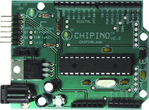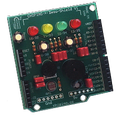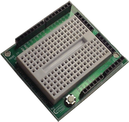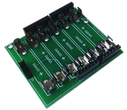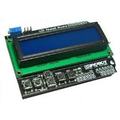CHIPINO Module
In 2005, after watching the Arduino module explode with popularity, I sat down with a few friends and questioned why it was so popular and why wasn't there a similar board for PICs. There were a few people attempting things but nothing we liked so the CHIPINO was created. It lives on at chipino.com.
The CHIPINO name was a play on the Italian word cioppino which is a community fish soup. Fisherman would donate some of their daily catch for a soup at the end of the day so everyone could share in their good fortune. We saw CHIPINO as the module the PIC user community could share. It is designed to interface to a PICkit 2 or PICkit 3 style programmer with 6-pin header so a user could program it in any PIC compiler language they wanted instead of locking them into one compiler and limited IDE like the Arduino. The CHIPINO can be programmed in C, BASIC, Assembly, Pascal , Flowcode, CCS, or any existing PIC compiler code that produces a .hex file for PICs. With the programming style interface, instead of a USB connection bootloader, CHIPINO can also run in debug mode. This allows you to run to breakpoints and watch variables change all while the module is in circuit. This is possible by using the free to download MPLAB or MPLAB X IDE from Microchip.com.
The CHIPINO continues today as an open source module that can accept most Arduino style shields. Great Cow Basic compiler is my latest focus because I wanted an open source beginner path. You can see more about that at the Great Cow Basic website. Below is a summary of the CHIPINO and some of the shields that were developed based on our own needs plus some of our favorites we like to use with the CHIPINO. The CHIPINO is officially available at the following resellers.
The CHIPINO name was a play on the Italian word cioppino which is a community fish soup. Fisherman would donate some of their daily catch for a soup at the end of the day so everyone could share in their good fortune. We saw CHIPINO as the module the PIC user community could share. It is designed to interface to a PICkit 2 or PICkit 3 style programmer with 6-pin header so a user could program it in any PIC compiler language they wanted instead of locking them into one compiler and limited IDE like the Arduino. The CHIPINO can be programmed in C, BASIC, Assembly, Pascal , Flowcode, CCS, or any existing PIC compiler code that produces a .hex file for PICs. With the programming style interface, instead of a USB connection bootloader, CHIPINO can also run in debug mode. This allows you to run to breakpoints and watch variables change all while the module is in circuit. This is possible by using the free to download MPLAB or MPLAB X IDE from Microchip.com.
The CHIPINO continues today as an open source module that can accept most Arduino style shields. Great Cow Basic compiler is my latest focus because I wanted an open source beginner path. You can see more about that at the Great Cow Basic website. Below is a summary of the CHIPINO and some of the shields that were developed based on our own needs plus some of our favorites we like to use with the CHIPINO. The CHIPINO is officially available at the following resellers.


